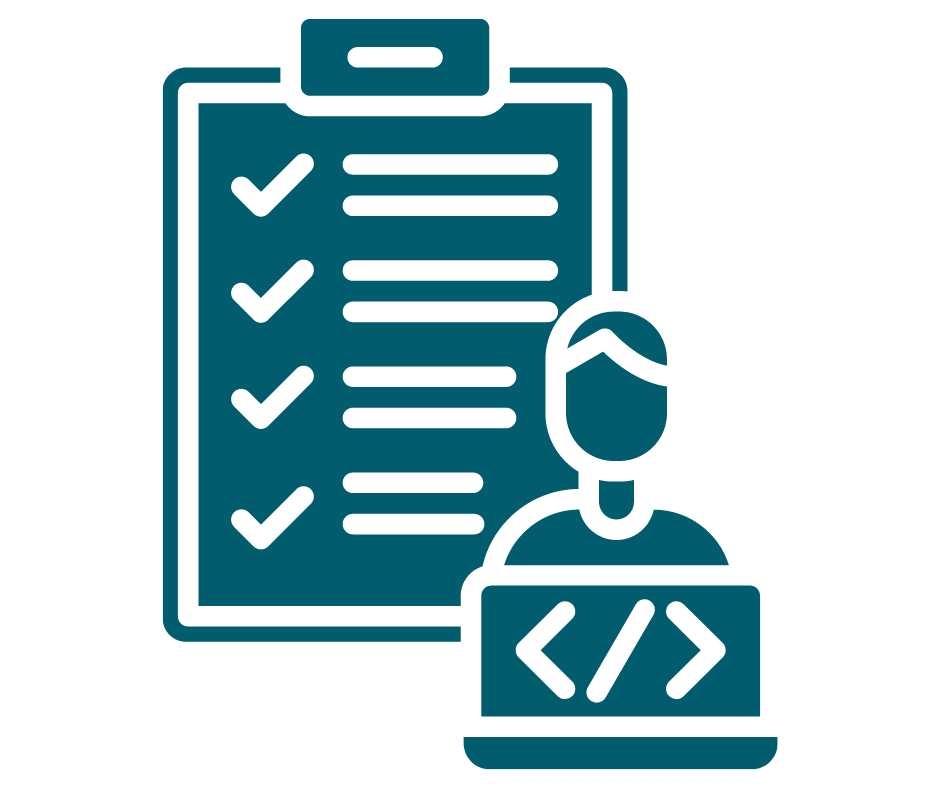How does WCAG 2.2 support disabled users?
AbilityNet | 21 Feb 2024When navigating the new Web Content Accessibility Guidelines (WCAG) 2.2 updates, it's important not to just focus on meeting compliance, but to reflect on how it impacts your very real users. To achieve this, combining WCAG 2.2 standards with user testing is key. This way, you can ensure that your website and digital content not only meet the standards, but also genuinely cater to the needs of real users.
In this blog post, we'll delve into the recent updates in WCAG 2.2 and discuss how these changes can significantly impact the lives of users, focussing on the lived experiences of disabled individuals.
What is WCAG?
WCAG, or the Web Content Accessibility Guidelines, serves as a benchmark for making digital content accessible to a diverse audience. With its four principles - perceivable, operable, understandable, and robust - WCAG sets standards that cater to various disabilities and technologies.
The guidelines have evolved over the years, with the recent release of WCAG 2.2 addressing a new range of new challenges faced by users.
 Need training for you or your team about WCAG 2.2?
Need training for you or your team about WCAG 2.2?Crack the code of WCAG 2.2 for developers, designers and all those who need to meet web accessibility standards.
To help explain some of the WCAG 2.2 success criterion updates and how it affects disabled users, let’s meet Jordan and Kirsty.
Jordan: Physical and cognitive disabilities and WCAG 
Jordan is a retired headmaster living with Parkinson's disease. Parkinson’s affects movement, causing tremors and affecting attention and executive functioning skills.
Jordan’s tremors lead to frequent mistakes and miss-clicks using the mouse, so he uses the keyboard to navigate websites. His attention span is affected by Parkinson's, which makes it difficult to spot and correct typing errors and complicating routines. It takes a lot of energy to type for Jordan, and if he uses a lot of energy, the symptoms of his Parkinson's disease will be more pronounced later in the day. He prefers to use a tablet, but there are obstacles such as inaccessible password managers preventing him from logging into a variety of different tools. He will often have to resort to asking family for help which affects his sense of value self-esteem.
Kirsty: Neurodiversity and WCAG 
Kirsty is a computer science master's graduate with ADHD and dyslexia.
Kirsty experiences emotional dysregulation and concentration difficulties. Although she spends a lot of time building assistive technology for people with a broad range of conditions, inaccessible digital content can still result in causing her emotional dysregulation which in turn affects her executive functions including memory and attention.
So, Kirsty can end up miss-clicking buttons, and become emotionally and cognitively drained, which affects her other activities throughout the day.
As we explore their experiences, we'll see how WCAG 2.2 guidelines can positively impact their interactions with digital content.
WCAG 2.2 Guidelines in Action
2.4.11 Focus Not Obscured (Minimum) and 2.4.12 Focus Not Obscured (Enhanced)
The Focus Not Obscured success criteria aim to enhance web accessibility for sighted users who rely on keyboard navigation, by ensuring that no interactive component or its focus indicator is partially or fully obscured by other content on the page. ![]()
Jordan started to use the keyboard a lot more rather than the mouse because of the physical effects of his Parkinson's. Kirsty uses keyboard shortcuts a lot because it helps her to concentrate and focus on a task.
So, for users like Jordan and Kirsty who rely on keyboard navigation, having a clear focus is crucial. Guidelines ensuring that focused elements are not obscured by overlays or banners contribute significantly to a smoother user experience.
2.4.13 Focus Appearance
The Focus Appearance success criterion makes it easier to spot the keyboard focus by using a focus indicator of sufficient size and contrast.
The width and colour contrast of the focus indicator become vital for users like Kirsty, with a shorter attention span. Ensuring a noticeable focus appearance aid in navigating digital interfaces seamlessly.
2.5.7 Dragging Movements and 2.5.8 Target Size (Minimum) 
Considering the physical challenges Jordan faces due to Parkinson's, the Dragging Movements criterion helps as it ensures ana single pointer alternative for functions requiring dragging movements.
The minimum target size set by the Target Size criterion make it easier to avoid accidentally clicking on the wrong button ensuring a more frustration-free experience.
3.3.7 Redundant Entry and 3.3.8 Accessible Authentication (Minimum)
The Redundant Entry criterion reduces frustration and physical strain by allowing users to avoid repetitive data input. The Accessible Authentication criterion means individuals are not required to memorise their details, transcribe passwords, or complete other types of cognitive tests to authenticate their identity or similar details.
Both criteria provide support for those with cognitive impairments or neurodivergence like Kirsty, who may struggle with memory-related tasks.
3.2.6 Consistent Help
The introduction of the Consistent Help criterion ensure consistent placement of help mechanisms across web pages, benefiting both Jordan and Kirsty, enabling them to find assistance easily and reducing the mental effort required to navigate through various sections.
WCAG 2.2’s impact on disabled people
Implementing WCAG 2.2 translates into tangible benefits for users like Jordan and Kirsty. Reducing redundant entries and ensuring accessible authentication empower them to use technology more independently.
Clear focus, larger target sizes, and consistent help placements alleviate frustration, making day-to-day activities less exhausting.
Each criterion plays a crucial role in addressing specific challenges faced by a wide variety of users.
WCAG 2.2 and user testing
By implementing these guidelines and conducting user testing, researchers can uncover nuanced experiences and barriers, enriching their findings. This approach provides a more holistic understanding of user interactions, ensuring that accessibility is not just an abstract concept, but a tangible improvement in the lives of your users.
WCAG 2.2 goes beyond a checklist; it has a tangible impact on individuals like Jordan and Kirsty, enhancing their digital experiences.
By seamlessly integrating accessibility and usability, you can move closer to a gold standard where technology empowers users, fostering confidence and independence.
Learn more about user testing
- User Testing Unveiled: A Step-by-Step Exploration
- 8 reasons why your user testing is failing
- How user testing helped the British Museum
Ready to conduct successful inclusive user testing?
We make sure that you ask the right people the right questions at the right time and make the best use of their feedback. Find out how to get the most from your user research budget.
Enquire about our user testing service
This blog is a loose transcription of our expert accessibility consultants Ashley Peacock and Claire Poste’s TechShare Pro 2023 Lunch and Learn recording about Humanising WCAG 2.2. Watch the full recording below.



